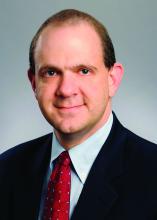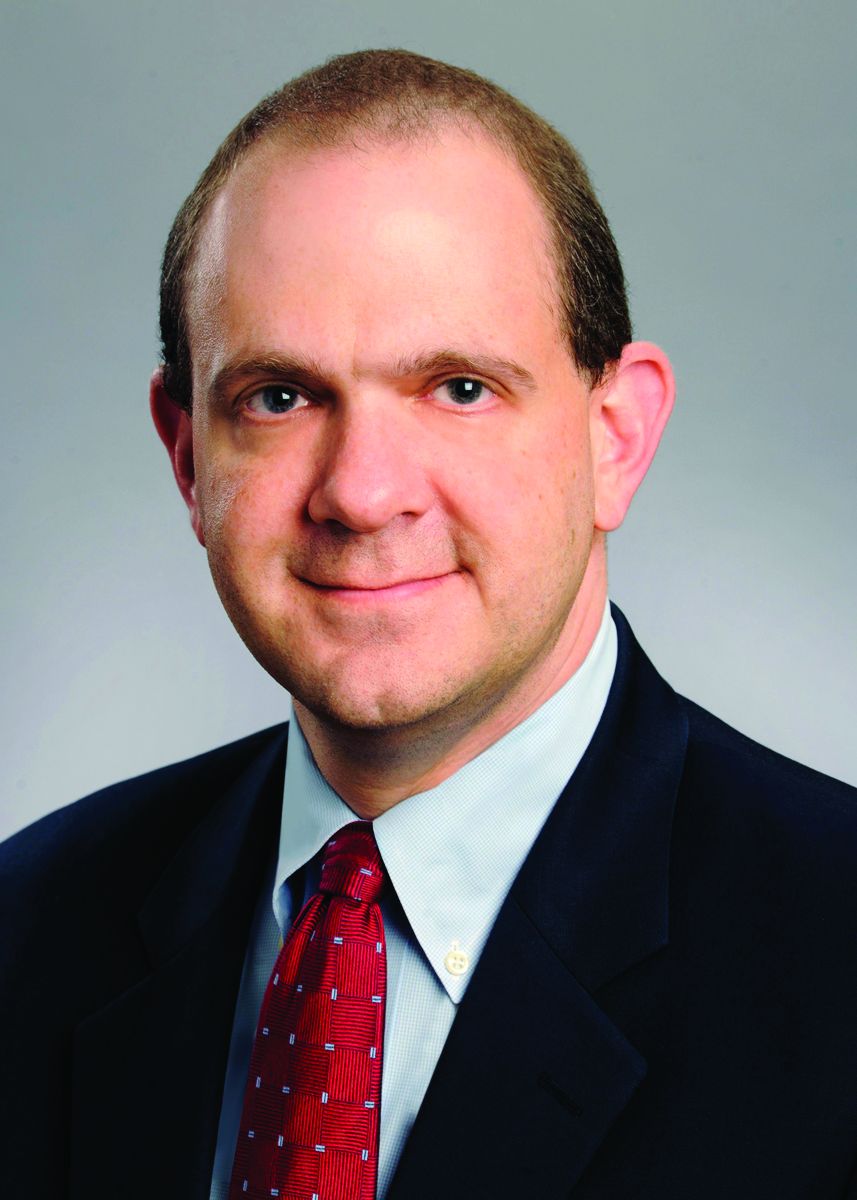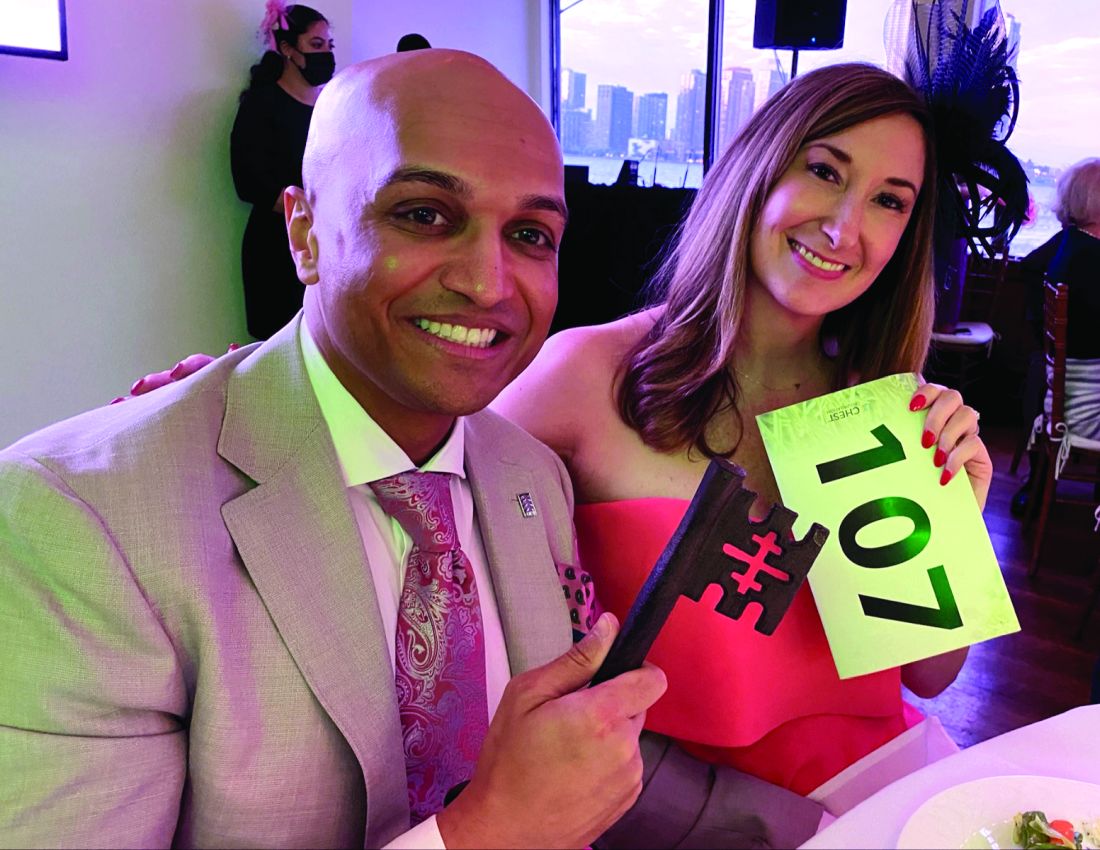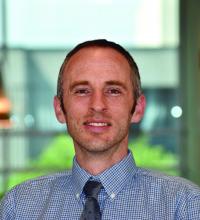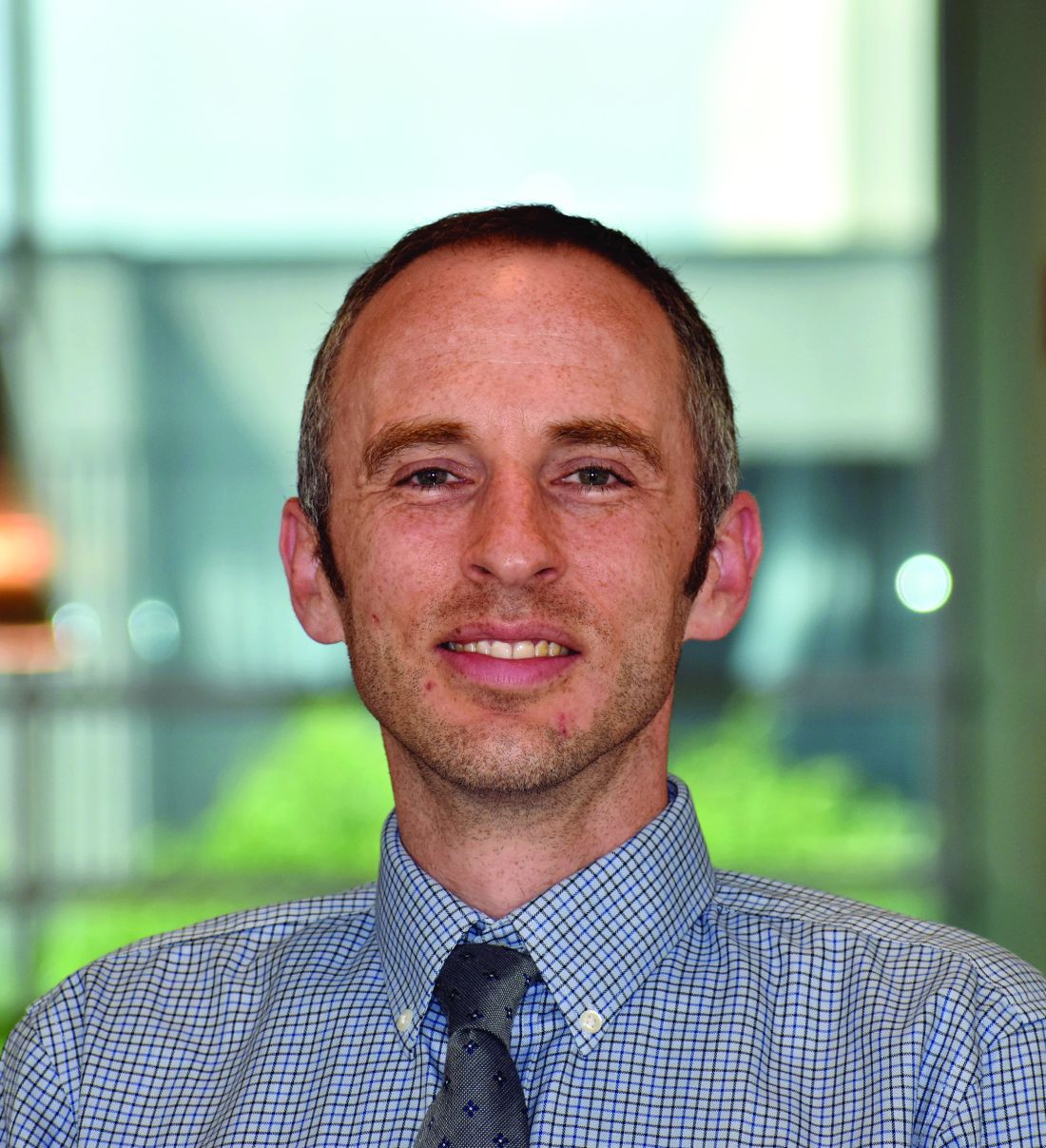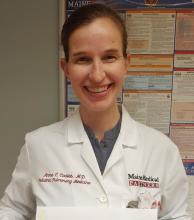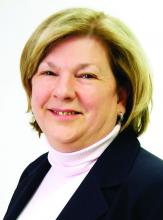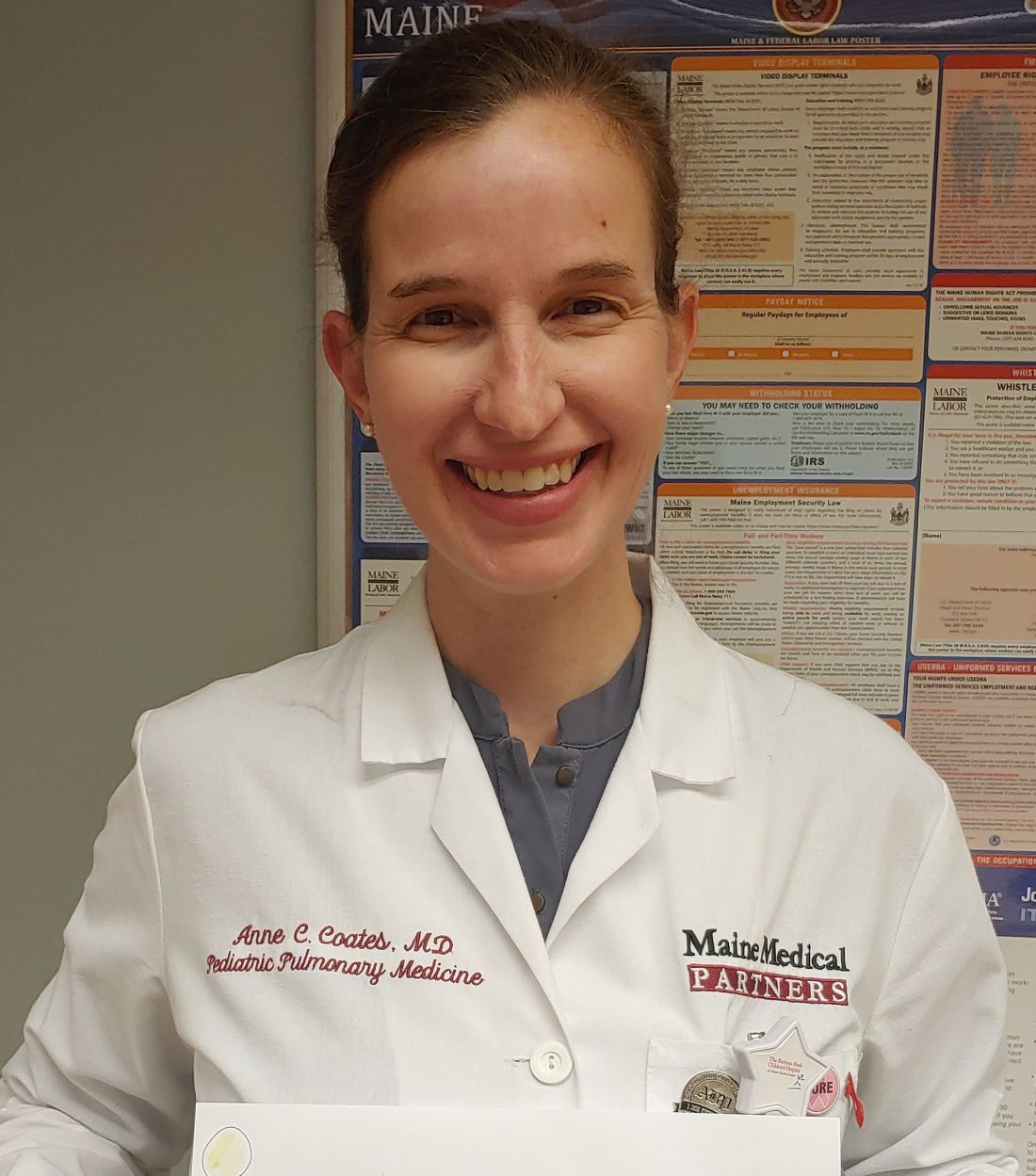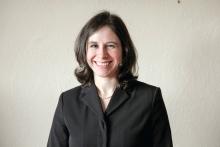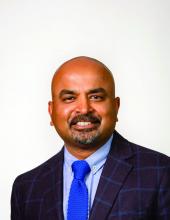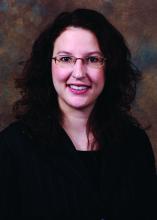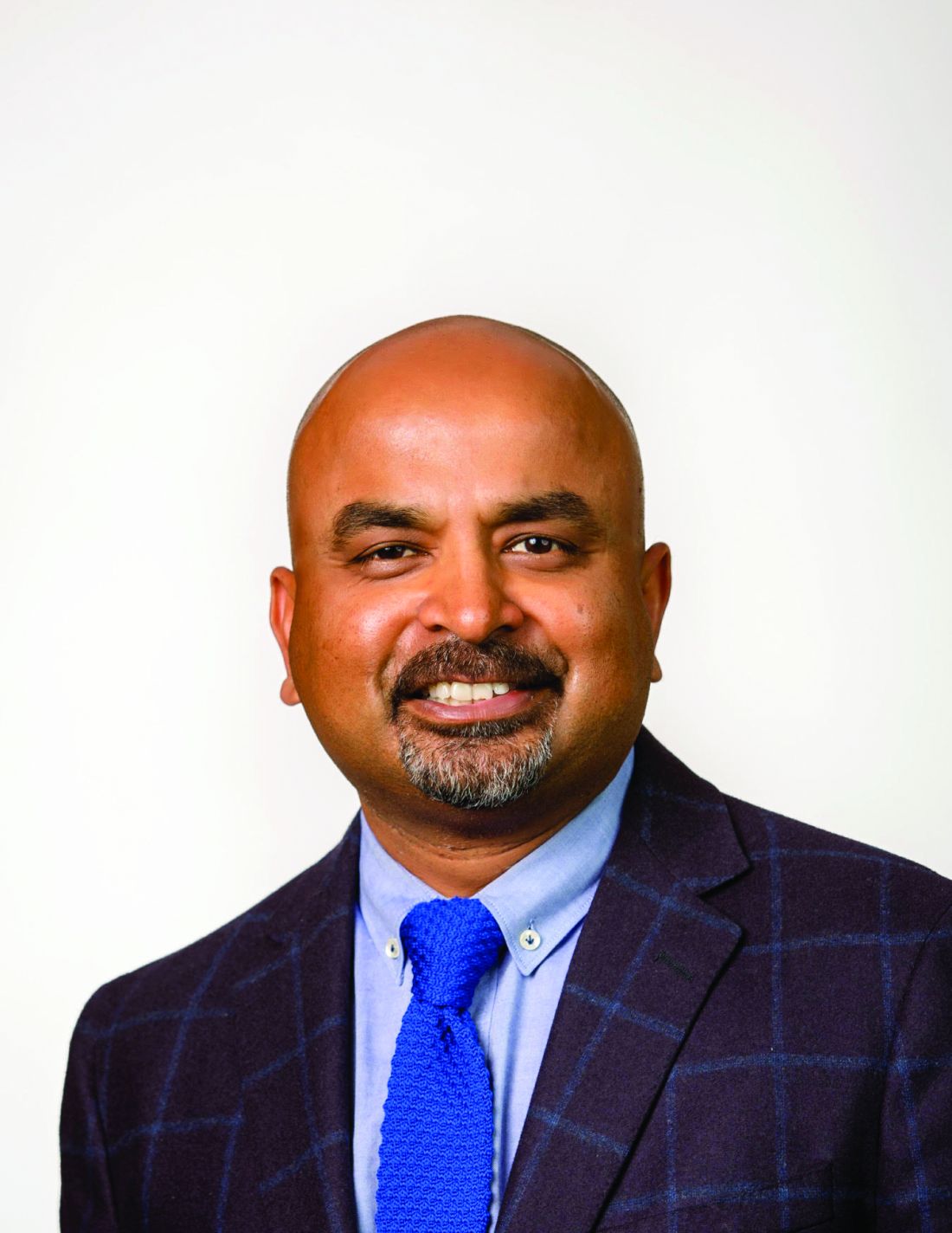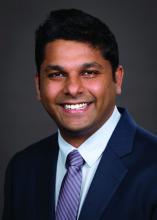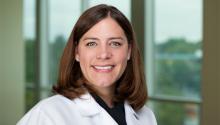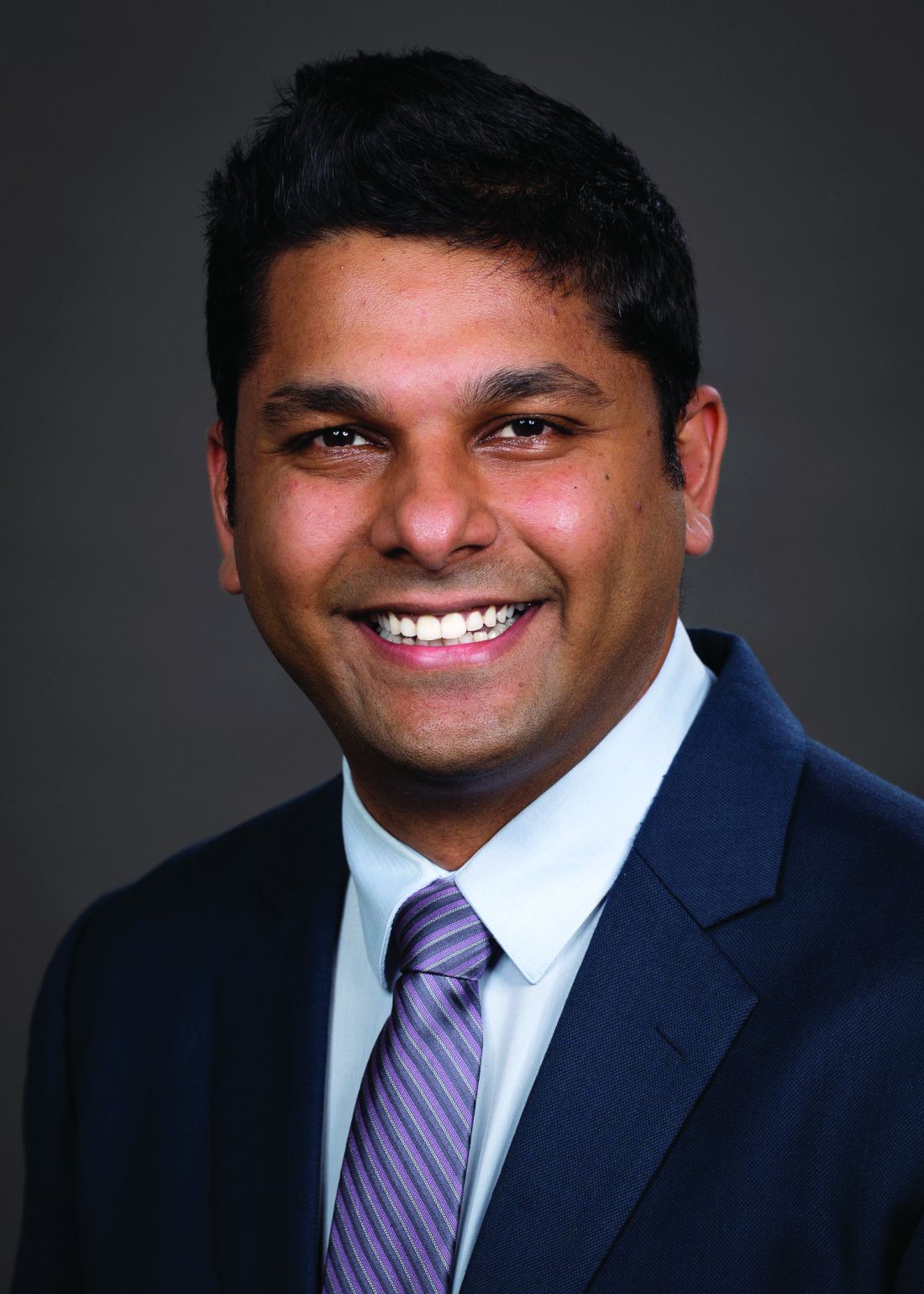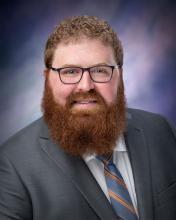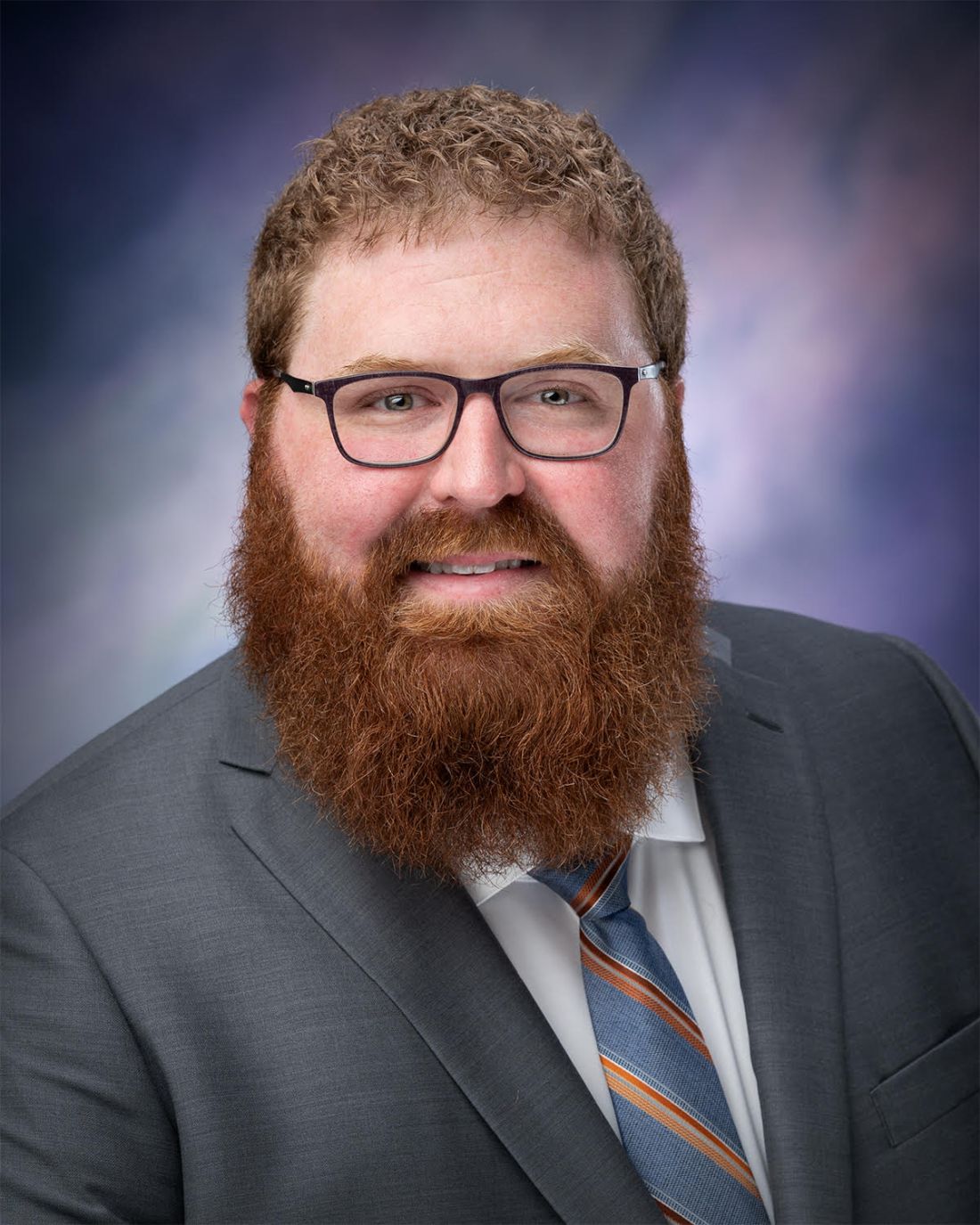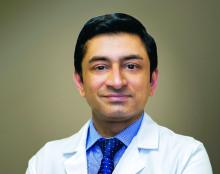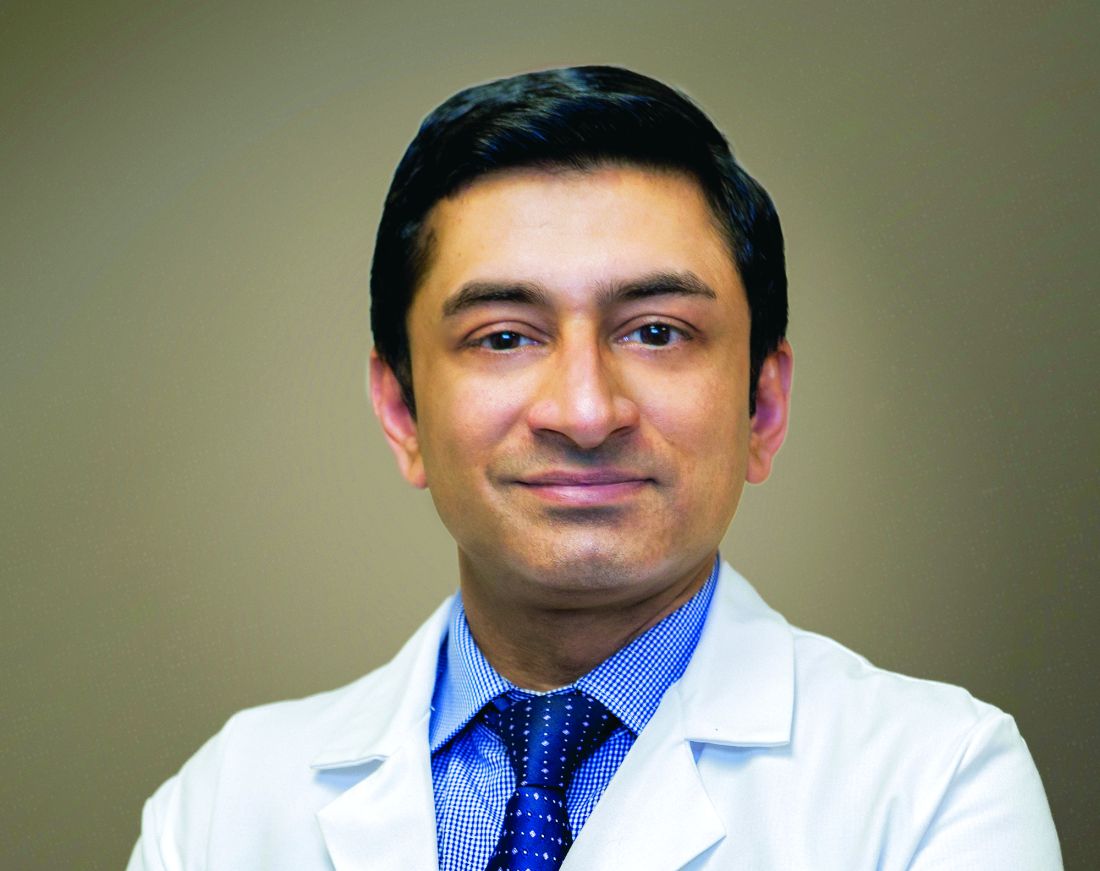User login
From the President: A day in the life
For those of you in the Northern Hemisphere, like me, spring has transitioned into summer, allowing us all to spend more time outdoors, gathering again with family, friends, and colleagues. And, while people are always happy to hear about what’s going on with the family, or how things are going at Emory, the most common question I get is “So what’s it like to be President of CHEST?” Now that I’ve been on the job for 6 months, I thought it was well enough time to pull back the curtain on the role for all of you out in CHEST-land who might be interested, as well. For the purposes of this column, I’ll be incorporating things that occurred over the past week.
As I’ve previously reported, the most important decisions that relate to CHEST strategy are made by the Board of Regents. While I do have the privilege of organizing and running Board meetings, most presidential duties between these meetings focus on communication: with our members, our leaders, and other organizations. One of the best parts of the job is the opportunity to interact with our members; between the [email protected] account and my own, I receive a couple of emails each day with questions about navigating CHEST, or ideas about ways that things might be better accomplished. With our recent Network and section reorganization, many of those questions have focused on leadership opportunities, inquiring about whether the writer should apply, or asking for information about the qualities that might increase the odds of earning a position. My answer is almost always the same: go ahead and throw your name in the hat; for most members, the sections are the first place to start the journey in CHEST leadership. And I’m pleased to say that I’ve had the chance to see some of the members who’ve reached out to me in the past selected for the positions to which they’d applied (in full disclosure, I have little role in selecting leadership positions; Network and section positions are chosen by current members of those Networks and sections). I look forward to watching their progress in our organizational leadership.
While CHEST CEO Robert Musacchio and I communicate almost every day, Wednesday is our weekly meeting during which we review progress on our organizational goals, the status of ongoing projects, and concerns from our membership and leadership. I also have the pleasure of meeting with my co-Presidents every other week; though Jack, Doreen, and Steve have always been happy to offer their counsel on very short notice, this semimonthly meeting helps to provide continuity in leadership, as well as a more formal opportunity for me to meet with trusted advisors to get a sounding board on active issues that affect CHEST. And, this gets to the other main job of CHEST President, which is to facilitate the making of important decisions on behalf of the College. I receive sporadic emails from CHEST staff as we are approached by other organizations or international partners for input on or approval for statements that they wish to make. In the case where the topic is clearly in the CHEST wheelhouse and the statement is consistent with our organizational goals, I can unilaterally sign off; a common example of something that fits in this category is content related to tobacco cessation. In the more frequent situation where the statement for approval is a bit more complex, I will usually refer the request to one of our committee, Network, or section chairs for consideration. Since the turnaround time on these requests is usually pretty short, I may ask them to advise me on their own, although they sometimes opt to run things by their own membership for further input or to achieve consensus.
The CHEST President also serves as ambassador to other organizations; this week, I had the pleasure of participating in a meeting with the American Board of Internal Medicine and a number of medical specialty leaders focused on how professional societies can help to mitigate the spread of medical misinformation. I also interfaced with several of our international partners in the pulmonary space, as they plan their own international meetings, to see how CHEST can contribute to the success of those endeavors by contributing content, speakers, or both. At the time of this writing, the CHEST Congress in Bologna, Italy, is right around the corner, and so I also spent time working with our Italian partners and program co-chair William Kelly, MD, FCCP, to finalize the meeting’s opening session. Though our own international meeting is still months away, work continues with the annual meeting innovations group, and I’ve been working with my own small team on some special surprises that you’ll hear more about in the coming months! The other CHEST meeting-related item on the front burner is the selection of the keynote speaker. The way this works is that I outline in broad strokes a sense of the flavor I’m targeting, and the CHEST staff work with a consulting group to propose some options. They provide me with a brief biography in clips, and we narrow the list down. As I write, we are finalizing our invitation, and I look forward to formally announcing the CHEST 2022 keynote speaker shortly!
After I explain the breadth of duties involved in my role, the most common follow-up question asked of me is whether I am enjoying the position. I’ll concede that it’s not for everyone. There’s a lot less independent decision-making than people assume. But, if you like getting to meet and interact with people from around the globe, helping them to see how CHEST can help them in their pursuits or career goals (and how they can help CHEST in our mission), it’s a super fun job. And I’ll most definitely miss it when I’m done.
So that, in brief, is an overview of what the CHEST President does. But each week is different. And, I get better at the job each day, as I learn something new about the position, the organization, and our outstanding members, leaders, and staff. I look forward to continuing to represent each of you in making decisions and communicating on behalf of CHEST. As always, I remain interested in your input as to how things are going; please consider reaching out to me at [email protected] at your convenience. ... I expect to have a few minutes to write back sometime next Thursday.
Until next time,
David
For those of you in the Northern Hemisphere, like me, spring has transitioned into summer, allowing us all to spend more time outdoors, gathering again with family, friends, and colleagues. And, while people are always happy to hear about what’s going on with the family, or how things are going at Emory, the most common question I get is “So what’s it like to be President of CHEST?” Now that I’ve been on the job for 6 months, I thought it was well enough time to pull back the curtain on the role for all of you out in CHEST-land who might be interested, as well. For the purposes of this column, I’ll be incorporating things that occurred over the past week.
As I’ve previously reported, the most important decisions that relate to CHEST strategy are made by the Board of Regents. While I do have the privilege of organizing and running Board meetings, most presidential duties between these meetings focus on communication: with our members, our leaders, and other organizations. One of the best parts of the job is the opportunity to interact with our members; between the [email protected] account and my own, I receive a couple of emails each day with questions about navigating CHEST, or ideas about ways that things might be better accomplished. With our recent Network and section reorganization, many of those questions have focused on leadership opportunities, inquiring about whether the writer should apply, or asking for information about the qualities that might increase the odds of earning a position. My answer is almost always the same: go ahead and throw your name in the hat; for most members, the sections are the first place to start the journey in CHEST leadership. And I’m pleased to say that I’ve had the chance to see some of the members who’ve reached out to me in the past selected for the positions to which they’d applied (in full disclosure, I have little role in selecting leadership positions; Network and section positions are chosen by current members of those Networks and sections). I look forward to watching their progress in our organizational leadership.
While CHEST CEO Robert Musacchio and I communicate almost every day, Wednesday is our weekly meeting during which we review progress on our organizational goals, the status of ongoing projects, and concerns from our membership and leadership. I also have the pleasure of meeting with my co-Presidents every other week; though Jack, Doreen, and Steve have always been happy to offer their counsel on very short notice, this semimonthly meeting helps to provide continuity in leadership, as well as a more formal opportunity for me to meet with trusted advisors to get a sounding board on active issues that affect CHEST. And, this gets to the other main job of CHEST President, which is to facilitate the making of important decisions on behalf of the College. I receive sporadic emails from CHEST staff as we are approached by other organizations or international partners for input on or approval for statements that they wish to make. In the case where the topic is clearly in the CHEST wheelhouse and the statement is consistent with our organizational goals, I can unilaterally sign off; a common example of something that fits in this category is content related to tobacco cessation. In the more frequent situation where the statement for approval is a bit more complex, I will usually refer the request to one of our committee, Network, or section chairs for consideration. Since the turnaround time on these requests is usually pretty short, I may ask them to advise me on their own, although they sometimes opt to run things by their own membership for further input or to achieve consensus.
The CHEST President also serves as ambassador to other organizations; this week, I had the pleasure of participating in a meeting with the American Board of Internal Medicine and a number of medical specialty leaders focused on how professional societies can help to mitigate the spread of medical misinformation. I also interfaced with several of our international partners in the pulmonary space, as they plan their own international meetings, to see how CHEST can contribute to the success of those endeavors by contributing content, speakers, or both. At the time of this writing, the CHEST Congress in Bologna, Italy, is right around the corner, and so I also spent time working with our Italian partners and program co-chair William Kelly, MD, FCCP, to finalize the meeting’s opening session. Though our own international meeting is still months away, work continues with the annual meeting innovations group, and I’ve been working with my own small team on some special surprises that you’ll hear more about in the coming months! The other CHEST meeting-related item on the front burner is the selection of the keynote speaker. The way this works is that I outline in broad strokes a sense of the flavor I’m targeting, and the CHEST staff work with a consulting group to propose some options. They provide me with a brief biography in clips, and we narrow the list down. As I write, we are finalizing our invitation, and I look forward to formally announcing the CHEST 2022 keynote speaker shortly!
After I explain the breadth of duties involved in my role, the most common follow-up question asked of me is whether I am enjoying the position. I’ll concede that it’s not for everyone. There’s a lot less independent decision-making than people assume. But, if you like getting to meet and interact with people from around the globe, helping them to see how CHEST can help them in their pursuits or career goals (and how they can help CHEST in our mission), it’s a super fun job. And I’ll most definitely miss it when I’m done.
So that, in brief, is an overview of what the CHEST President does. But each week is different. And, I get better at the job each day, as I learn something new about the position, the organization, and our outstanding members, leaders, and staff. I look forward to continuing to represent each of you in making decisions and communicating on behalf of CHEST. As always, I remain interested in your input as to how things are going; please consider reaching out to me at [email protected] at your convenience. ... I expect to have a few minutes to write back sometime next Thursday.
Until next time,
David
For those of you in the Northern Hemisphere, like me, spring has transitioned into summer, allowing us all to spend more time outdoors, gathering again with family, friends, and colleagues. And, while people are always happy to hear about what’s going on with the family, or how things are going at Emory, the most common question I get is “So what’s it like to be President of CHEST?” Now that I’ve been on the job for 6 months, I thought it was well enough time to pull back the curtain on the role for all of you out in CHEST-land who might be interested, as well. For the purposes of this column, I’ll be incorporating things that occurred over the past week.
As I’ve previously reported, the most important decisions that relate to CHEST strategy are made by the Board of Regents. While I do have the privilege of organizing and running Board meetings, most presidential duties between these meetings focus on communication: with our members, our leaders, and other organizations. One of the best parts of the job is the opportunity to interact with our members; between the [email protected] account and my own, I receive a couple of emails each day with questions about navigating CHEST, or ideas about ways that things might be better accomplished. With our recent Network and section reorganization, many of those questions have focused on leadership opportunities, inquiring about whether the writer should apply, or asking for information about the qualities that might increase the odds of earning a position. My answer is almost always the same: go ahead and throw your name in the hat; for most members, the sections are the first place to start the journey in CHEST leadership. And I’m pleased to say that I’ve had the chance to see some of the members who’ve reached out to me in the past selected for the positions to which they’d applied (in full disclosure, I have little role in selecting leadership positions; Network and section positions are chosen by current members of those Networks and sections). I look forward to watching their progress in our organizational leadership.
While CHEST CEO Robert Musacchio and I communicate almost every day, Wednesday is our weekly meeting during which we review progress on our organizational goals, the status of ongoing projects, and concerns from our membership and leadership. I also have the pleasure of meeting with my co-Presidents every other week; though Jack, Doreen, and Steve have always been happy to offer their counsel on very short notice, this semimonthly meeting helps to provide continuity in leadership, as well as a more formal opportunity for me to meet with trusted advisors to get a sounding board on active issues that affect CHEST. And, this gets to the other main job of CHEST President, which is to facilitate the making of important decisions on behalf of the College. I receive sporadic emails from CHEST staff as we are approached by other organizations or international partners for input on or approval for statements that they wish to make. In the case where the topic is clearly in the CHEST wheelhouse and the statement is consistent with our organizational goals, I can unilaterally sign off; a common example of something that fits in this category is content related to tobacco cessation. In the more frequent situation where the statement for approval is a bit more complex, I will usually refer the request to one of our committee, Network, or section chairs for consideration. Since the turnaround time on these requests is usually pretty short, I may ask them to advise me on their own, although they sometimes opt to run things by their own membership for further input or to achieve consensus.
The CHEST President also serves as ambassador to other organizations; this week, I had the pleasure of participating in a meeting with the American Board of Internal Medicine and a number of medical specialty leaders focused on how professional societies can help to mitigate the spread of medical misinformation. I also interfaced with several of our international partners in the pulmonary space, as they plan their own international meetings, to see how CHEST can contribute to the success of those endeavors by contributing content, speakers, or both. At the time of this writing, the CHEST Congress in Bologna, Italy, is right around the corner, and so I also spent time working with our Italian partners and program co-chair William Kelly, MD, FCCP, to finalize the meeting’s opening session. Though our own international meeting is still months away, work continues with the annual meeting innovations group, and I’ve been working with my own small team on some special surprises that you’ll hear more about in the coming months! The other CHEST meeting-related item on the front burner is the selection of the keynote speaker. The way this works is that I outline in broad strokes a sense of the flavor I’m targeting, and the CHEST staff work with a consulting group to propose some options. They provide me with a brief biography in clips, and we narrow the list down. As I write, we are finalizing our invitation, and I look forward to formally announcing the CHEST 2022 keynote speaker shortly!
After I explain the breadth of duties involved in my role, the most common follow-up question asked of me is whether I am enjoying the position. I’ll concede that it’s not for everyone. There’s a lot less independent decision-making than people assume. But, if you like getting to meet and interact with people from around the globe, helping them to see how CHEST can help them in their pursuits or career goals (and how they can help CHEST in our mission), it’s a super fun job. And I’ll most definitely miss it when I’m done.
So that, in brief, is an overview of what the CHEST President does. But each week is different. And, I get better at the job each day, as I learn something new about the position, the organization, and our outstanding members, leaders, and staff. I look forward to continuing to represent each of you in making decisions and communicating on behalf of CHEST. As always, I remain interested in your input as to how things are going; please consider reaching out to me at [email protected] at your convenience. ... I expect to have a few minutes to write back sometime next Thursday.
Until next time,
David
And, they’re off! Belmont Stakes Dinner and Auction fundraises for patient education
For a night of fun and philanthropy, CHEST leadership and supporters of the CHEST Foundation came together in New York City to watch the Belmont Stakes race and raise money to support patient education.
What started 8 years ago as a brunch in the living room of Doreen Addrizzo-Harris, MD, FCCP, to support the initiatives of the CHEST Foundation.
Spearheaded by Dr. Addrizzo- Harris, President-Elect of the American College of Chest Physicians, this year’s event was focused entirely on patient education and advocacy. The attendees heard the moving stories of Betsy Glaeser and Fred Schick who are both patients living with lung disease and advocates for others living with like afflictions. Betsy is living with nontuberculous mycobacteria (NTM) disease and Fred with idiopathic pulmonary fibrosis (IPF). Betsy and Fred have used their experiences to serve as support for others in similar positions.
Betsy Glaeser, a longtime patient of Dr. Addrizzo-Harris, shared a story about the struggle of being one of the first cases of NTM bronchiectasis and helping to define the course of action. She shared that her original doctors gave her 5 years to live. The room erupted in applause when she shared that with the exceptional treatment she’s received, over 20 years later, she is standing in front of the supporters of the CHEST Foundation to share her story.
Because of the rarity of her disease, she was hospitalized multiple times with pneumonia before finally reaching her diagnosis of NTM disease. She channeled the accompanying frustrations into helping others who were recently diagnosed with the NTM disorder by sharing her experiences. “I would give them guidance on treatment options because in my years of living with the disease, I’d been there and tried almost everything,” said Betsy. “I would get calls from my doctor all of the time to speak with someone who just received an NTM disease diagnosis. I was happy to do so – at the time, the Internet didn’t exist, and firsthand experiences were all we had. Since forming our physical support group, the most memorable experience I can recall is when a woman, newly diagnosed with NTM, walked into the room and immediately burst into tears. She shared that she expected to see all of us on oxygen and wheelchair-bound, but that wasn’t the case at all. That day, we were able to give her hope. That’s why I do what I do, and I’m proud to do it.”
Fred Schick shared with the attendees his story of struggling to find his IPF diagnosis and how incredibly frustrating it was to be so short of breath that he needed to be rescued from the water while on vacation. With a history of cardiac complications, Fred’s doctors were looking at his heart.
For Fred to get to his IPF diagnosis, it took the careful ear of a primary care doctor Fred started to see when his previous doctor retired.
“It was almost like she was listening with different ears and was hearing what others didn’t. Once she recommended speaking with a pulmonologist, everything fell into place,” said Fred. “From my experience, IPF is best treated by a lot of pieces coming together and working together. It takes the dedication of a care team in the hospital, proper diet and exercise and, just as importantly, it takes a support group to guide you through the process. I’m grateful to my care team, but I’m equally thankful for the work I get to do as an advocate for others living with IPF.”
When she spoke to the attendees, Lisa Moores, MD, FCCP, reflected on what the patients shared. “We saw great examples of why we’re here tonight,” said Dr. Moores. “One of the things CHEST and the Foundation are focusing on is earlier diagnosis for interstitial lung diseases like pulmonary fibrosis and, with voices like Fred Schick, we’ll get there. The patients remind us why we’re here. We’re here for our patients; we’re here for Fred; and we’re here for Betsy.”
Laurence Feldman, Vice President of the Feldman Family Foundation that partners with the CHEST Foundation for their annual casino fundraiser benefiting pulmonary fibrosis, was able to participate in the dinner and theauction.
He shared, “Tonight, I was so impressed with the generosity of the attendees and the organization of this event. It reminded me that if you ask your supporters to give, they’ll be there for you. Almost like the ‘Field of Dreams’ quote of ‘if you build it, they will come.’ Being at the Belmont Stakes Dinner and Auction makes me that much more excited for our upcoming Irv Feldman Casino Night and Texas Hold ‘Em Tournament coming up in late August. Thanks to our corporate partners and the support of the CHEST Foundation, we’re able to produce an excellent event like the Belmont Stakes fundraiser that helps bring in donations that can make a difference in the lives of patients.”
At the end of the day, medicine is all about the patients and, by dedicating the night to patient education and patient advocates, the Belmont Stakes event brought the focus to where it should always be – improving care and helping patients.
To learn more and to support the various initiatives of the CHEST Foundation, visit foundation.chestnet.org/donate.
For a night of fun and philanthropy, CHEST leadership and supporters of the CHEST Foundation came together in New York City to watch the Belmont Stakes race and raise money to support patient education.
What started 8 years ago as a brunch in the living room of Doreen Addrizzo-Harris, MD, FCCP, to support the initiatives of the CHEST Foundation.
Spearheaded by Dr. Addrizzo- Harris, President-Elect of the American College of Chest Physicians, this year’s event was focused entirely on patient education and advocacy. The attendees heard the moving stories of Betsy Glaeser and Fred Schick who are both patients living with lung disease and advocates for others living with like afflictions. Betsy is living with nontuberculous mycobacteria (NTM) disease and Fred with idiopathic pulmonary fibrosis (IPF). Betsy and Fred have used their experiences to serve as support for others in similar positions.
Betsy Glaeser, a longtime patient of Dr. Addrizzo-Harris, shared a story about the struggle of being one of the first cases of NTM bronchiectasis and helping to define the course of action. She shared that her original doctors gave her 5 years to live. The room erupted in applause when she shared that with the exceptional treatment she’s received, over 20 years later, she is standing in front of the supporters of the CHEST Foundation to share her story.
Because of the rarity of her disease, she was hospitalized multiple times with pneumonia before finally reaching her diagnosis of NTM disease. She channeled the accompanying frustrations into helping others who were recently diagnosed with the NTM disorder by sharing her experiences. “I would give them guidance on treatment options because in my years of living with the disease, I’d been there and tried almost everything,” said Betsy. “I would get calls from my doctor all of the time to speak with someone who just received an NTM disease diagnosis. I was happy to do so – at the time, the Internet didn’t exist, and firsthand experiences were all we had. Since forming our physical support group, the most memorable experience I can recall is when a woman, newly diagnosed with NTM, walked into the room and immediately burst into tears. She shared that she expected to see all of us on oxygen and wheelchair-bound, but that wasn’t the case at all. That day, we were able to give her hope. That’s why I do what I do, and I’m proud to do it.”
Fred Schick shared with the attendees his story of struggling to find his IPF diagnosis and how incredibly frustrating it was to be so short of breath that he needed to be rescued from the water while on vacation. With a history of cardiac complications, Fred’s doctors were looking at his heart.
For Fred to get to his IPF diagnosis, it took the careful ear of a primary care doctor Fred started to see when his previous doctor retired.
“It was almost like she was listening with different ears and was hearing what others didn’t. Once she recommended speaking with a pulmonologist, everything fell into place,” said Fred. “From my experience, IPF is best treated by a lot of pieces coming together and working together. It takes the dedication of a care team in the hospital, proper diet and exercise and, just as importantly, it takes a support group to guide you through the process. I’m grateful to my care team, but I’m equally thankful for the work I get to do as an advocate for others living with IPF.”
When she spoke to the attendees, Lisa Moores, MD, FCCP, reflected on what the patients shared. “We saw great examples of why we’re here tonight,” said Dr. Moores. “One of the things CHEST and the Foundation are focusing on is earlier diagnosis for interstitial lung diseases like pulmonary fibrosis and, with voices like Fred Schick, we’ll get there. The patients remind us why we’re here. We’re here for our patients; we’re here for Fred; and we’re here for Betsy.”
Laurence Feldman, Vice President of the Feldman Family Foundation that partners with the CHEST Foundation for their annual casino fundraiser benefiting pulmonary fibrosis, was able to participate in the dinner and theauction.
He shared, “Tonight, I was so impressed with the generosity of the attendees and the organization of this event. It reminded me that if you ask your supporters to give, they’ll be there for you. Almost like the ‘Field of Dreams’ quote of ‘if you build it, they will come.’ Being at the Belmont Stakes Dinner and Auction makes me that much more excited for our upcoming Irv Feldman Casino Night and Texas Hold ‘Em Tournament coming up in late August. Thanks to our corporate partners and the support of the CHEST Foundation, we’re able to produce an excellent event like the Belmont Stakes fundraiser that helps bring in donations that can make a difference in the lives of patients.”
At the end of the day, medicine is all about the patients and, by dedicating the night to patient education and patient advocates, the Belmont Stakes event brought the focus to where it should always be – improving care and helping patients.
To learn more and to support the various initiatives of the CHEST Foundation, visit foundation.chestnet.org/donate.
For a night of fun and philanthropy, CHEST leadership and supporters of the CHEST Foundation came together in New York City to watch the Belmont Stakes race and raise money to support patient education.
What started 8 years ago as a brunch in the living room of Doreen Addrizzo-Harris, MD, FCCP, to support the initiatives of the CHEST Foundation.
Spearheaded by Dr. Addrizzo- Harris, President-Elect of the American College of Chest Physicians, this year’s event was focused entirely on patient education and advocacy. The attendees heard the moving stories of Betsy Glaeser and Fred Schick who are both patients living with lung disease and advocates for others living with like afflictions. Betsy is living with nontuberculous mycobacteria (NTM) disease and Fred with idiopathic pulmonary fibrosis (IPF). Betsy and Fred have used their experiences to serve as support for others in similar positions.
Betsy Glaeser, a longtime patient of Dr. Addrizzo-Harris, shared a story about the struggle of being one of the first cases of NTM bronchiectasis and helping to define the course of action. She shared that her original doctors gave her 5 years to live. The room erupted in applause when she shared that with the exceptional treatment she’s received, over 20 years later, she is standing in front of the supporters of the CHEST Foundation to share her story.
Because of the rarity of her disease, she was hospitalized multiple times with pneumonia before finally reaching her diagnosis of NTM disease. She channeled the accompanying frustrations into helping others who were recently diagnosed with the NTM disorder by sharing her experiences. “I would give them guidance on treatment options because in my years of living with the disease, I’d been there and tried almost everything,” said Betsy. “I would get calls from my doctor all of the time to speak with someone who just received an NTM disease diagnosis. I was happy to do so – at the time, the Internet didn’t exist, and firsthand experiences were all we had. Since forming our physical support group, the most memorable experience I can recall is when a woman, newly diagnosed with NTM, walked into the room and immediately burst into tears. She shared that she expected to see all of us on oxygen and wheelchair-bound, but that wasn’t the case at all. That day, we were able to give her hope. That’s why I do what I do, and I’m proud to do it.”
Fred Schick shared with the attendees his story of struggling to find his IPF diagnosis and how incredibly frustrating it was to be so short of breath that he needed to be rescued from the water while on vacation. With a history of cardiac complications, Fred’s doctors were looking at his heart.
For Fred to get to his IPF diagnosis, it took the careful ear of a primary care doctor Fred started to see when his previous doctor retired.
“It was almost like she was listening with different ears and was hearing what others didn’t. Once she recommended speaking with a pulmonologist, everything fell into place,” said Fred. “From my experience, IPF is best treated by a lot of pieces coming together and working together. It takes the dedication of a care team in the hospital, proper diet and exercise and, just as importantly, it takes a support group to guide you through the process. I’m grateful to my care team, but I’m equally thankful for the work I get to do as an advocate for others living with IPF.”
When she spoke to the attendees, Lisa Moores, MD, FCCP, reflected on what the patients shared. “We saw great examples of why we’re here tonight,” said Dr. Moores. “One of the things CHEST and the Foundation are focusing on is earlier diagnosis for interstitial lung diseases like pulmonary fibrosis and, with voices like Fred Schick, we’ll get there. The patients remind us why we’re here. We’re here for our patients; we’re here for Fred; and we’re here for Betsy.”
Laurence Feldman, Vice President of the Feldman Family Foundation that partners with the CHEST Foundation for their annual casino fundraiser benefiting pulmonary fibrosis, was able to participate in the dinner and theauction.
He shared, “Tonight, I was so impressed with the generosity of the attendees and the organization of this event. It reminded me that if you ask your supporters to give, they’ll be there for you. Almost like the ‘Field of Dreams’ quote of ‘if you build it, they will come.’ Being at the Belmont Stakes Dinner and Auction makes me that much more excited for our upcoming Irv Feldman Casino Night and Texas Hold ‘Em Tournament coming up in late August. Thanks to our corporate partners and the support of the CHEST Foundation, we’re able to produce an excellent event like the Belmont Stakes fundraiser that helps bring in donations that can make a difference in the lives of patients.”
At the end of the day, medicine is all about the patients and, by dedicating the night to patient education and patient advocates, the Belmont Stakes event brought the focus to where it should always be – improving care and helping patients.
To learn more and to support the various initiatives of the CHEST Foundation, visit foundation.chestnet.org/donate.
Diffuse Lung Disease & Transplant Network
Pulmonary Physiology & Rehabilitation Section
Interpretive strategies for routine lung function tests
In December 2021, the European Respiratory Journal published the, ERS/ATS technical standard on interpretive strategies for routine lung function tests (Stanojevic S, et al. Eur Respir J. 2021 Dec 23;2101499). Briefly, a few of the updated recommendations are discussed here.
First, the task force recommends the use of Global Lung Initiative (GLI) reference values for spirometry, lung volumes, and diffusing capacity of carbon monoxide. GLI equations were derived from the largest sample of healthy individuals to date and provide an internal consistency across all ages.
Second, it is now recommended that z-scores are used as opposed to percent predicted in grading severity of impairment. Z-scores, which refer to the number of standard deviations a measurement is positioned from the predicted value, centered at zero, account better for age, sex, and height biases compared with percent predicted, and is simplified into mild (z-score -1.65 to -2.5), moderate (-2.51 to -4), and severe (< -4) categories.
A bronchodilator response is now defined as a > 10% change from the predicted value in FEV1 or FVC while the concept of a conditional change score in children and FEV1Q in adults has been introduced to describe lung function change.
The recommendations reflect and reiterate a shift in reporting a range of values, rather than using absolute threshold values, with an emphasis on the classification of physiologic impairments. The uncertainty present as lung function approaches the lower limit of normal is acknowledged, emphasizing the importance of pretest probability in making a clinical diagnosis and/or clinical decision. We encourage all pulmonary clinicians to review this important paper for more detailed information on these changes.
Tom DeCato, MD, Vice-Chair
Gina Lee, MD, Member-at-Large
Pulmonary Physiology & Rehabilitation Section
Interpretive strategies for routine lung function tests
In December 2021, the European Respiratory Journal published the, ERS/ATS technical standard on interpretive strategies for routine lung function tests (Stanojevic S, et al. Eur Respir J. 2021 Dec 23;2101499). Briefly, a few of the updated recommendations are discussed here.
First, the task force recommends the use of Global Lung Initiative (GLI) reference values for spirometry, lung volumes, and diffusing capacity of carbon monoxide. GLI equations were derived from the largest sample of healthy individuals to date and provide an internal consistency across all ages.
Second, it is now recommended that z-scores are used as opposed to percent predicted in grading severity of impairment. Z-scores, which refer to the number of standard deviations a measurement is positioned from the predicted value, centered at zero, account better for age, sex, and height biases compared with percent predicted, and is simplified into mild (z-score -1.65 to -2.5), moderate (-2.51 to -4), and severe (< -4) categories.
A bronchodilator response is now defined as a > 10% change from the predicted value in FEV1 or FVC while the concept of a conditional change score in children and FEV1Q in adults has been introduced to describe lung function change.
The recommendations reflect and reiterate a shift in reporting a range of values, rather than using absolute threshold values, with an emphasis on the classification of physiologic impairments. The uncertainty present as lung function approaches the lower limit of normal is acknowledged, emphasizing the importance of pretest probability in making a clinical diagnosis and/or clinical decision. We encourage all pulmonary clinicians to review this important paper for more detailed information on these changes.
Tom DeCato, MD, Vice-Chair
Gina Lee, MD, Member-at-Large
Pulmonary Physiology & Rehabilitation Section
Interpretive strategies for routine lung function tests
In December 2021, the European Respiratory Journal published the, ERS/ATS technical standard on interpretive strategies for routine lung function tests (Stanojevic S, et al. Eur Respir J. 2021 Dec 23;2101499). Briefly, a few of the updated recommendations are discussed here.
First, the task force recommends the use of Global Lung Initiative (GLI) reference values for spirometry, lung volumes, and diffusing capacity of carbon monoxide. GLI equations were derived from the largest sample of healthy individuals to date and provide an internal consistency across all ages.
Second, it is now recommended that z-scores are used as opposed to percent predicted in grading severity of impairment. Z-scores, which refer to the number of standard deviations a measurement is positioned from the predicted value, centered at zero, account better for age, sex, and height biases compared with percent predicted, and is simplified into mild (z-score -1.65 to -2.5), moderate (-2.51 to -4), and severe (< -4) categories.
A bronchodilator response is now defined as a > 10% change from the predicted value in FEV1 or FVC while the concept of a conditional change score in children and FEV1Q in adults has been introduced to describe lung function change.
The recommendations reflect and reiterate a shift in reporting a range of values, rather than using absolute threshold values, with an emphasis on the classification of physiologic impairments. The uncertainty present as lung function approaches the lower limit of normal is acknowledged, emphasizing the importance of pretest probability in making a clinical diagnosis and/or clinical decision. We encourage all pulmonary clinicians to review this important paper for more detailed information on these changes.
Tom DeCato, MD, Vice-Chair
Gina Lee, MD, Member-at-Large
Airways Disorders Network
Pediatric Chest Medicine Section
Hope is on the horizon—new RSV protection for all infants
as available preventive therapies are limited and currently reserved for former preterm infants and those with certain underlying medical conditions (Brady MT, et al. Pediatrics. 2014;134[2]:415). Globally, RSV is a significant cause of lower respiratory tract infection impacting all age groups, yet, in infants and young children, the first infection may cause severe bronchiolitis that can be fatal (Li Y, et al. Lancet. 2022;399:2047).
There are currently three approaches for protection at various stages of clinical development. The first is direct administration of antibodies to the infant. Two potent, longer-lasting, single-dose monoclonal antibody products, including nirsevimab which is a monoclonal antibody to the RSV fusion protein that has an extended half-life, for the general infant population are in phase 3 trials (Hammitt LL, et al. N Engl J Med. 2022;386:837; Griffin PM, et al. N Engl J Med. 2020;383:415).
Passive antibody acquired from maternal vaccination in pregnancy is a second approach. Notably, a recent phase 3 trial that evaluated maternal vaccination did not show significance with respect to the primary end point of medically significant RSV-associated lower respiratory tract infection in infants up to 90 days of life (Madhi SA. N Engl J Med. 2020;383:426).
The third type of protection is active vaccination. Increased understanding of the biology of RSV and related technological advances have resulted in the entry of multiple vaccines into clinical development for pediatrics and adults, some of which may receive regulatory approval in the near future (Munoz FM, et al. Vaccine. 2021;39[22]:3053).
The burden of RSV is tremendous, yet the future of RSV protection looks promising.
Anne C. Coates, MD, FCCP, Member-at-Large
Mary Cataletto, MD, FCCP, Member-at-Large
Pediatric Chest Medicine Section
Hope is on the horizon—new RSV protection for all infants
as available preventive therapies are limited and currently reserved for former preterm infants and those with certain underlying medical conditions (Brady MT, et al. Pediatrics. 2014;134[2]:415). Globally, RSV is a significant cause of lower respiratory tract infection impacting all age groups, yet, in infants and young children, the first infection may cause severe bronchiolitis that can be fatal (Li Y, et al. Lancet. 2022;399:2047).
There are currently three approaches for protection at various stages of clinical development. The first is direct administration of antibodies to the infant. Two potent, longer-lasting, single-dose monoclonal antibody products, including nirsevimab which is a monoclonal antibody to the RSV fusion protein that has an extended half-life, for the general infant population are in phase 3 trials (Hammitt LL, et al. N Engl J Med. 2022;386:837; Griffin PM, et al. N Engl J Med. 2020;383:415).
Passive antibody acquired from maternal vaccination in pregnancy is a second approach. Notably, a recent phase 3 trial that evaluated maternal vaccination did not show significance with respect to the primary end point of medically significant RSV-associated lower respiratory tract infection in infants up to 90 days of life (Madhi SA. N Engl J Med. 2020;383:426).
The third type of protection is active vaccination. Increased understanding of the biology of RSV and related technological advances have resulted in the entry of multiple vaccines into clinical development for pediatrics and adults, some of which may receive regulatory approval in the near future (Munoz FM, et al. Vaccine. 2021;39[22]:3053).
The burden of RSV is tremendous, yet the future of RSV protection looks promising.
Anne C. Coates, MD, FCCP, Member-at-Large
Mary Cataletto, MD, FCCP, Member-at-Large
Pediatric Chest Medicine Section
Hope is on the horizon—new RSV protection for all infants
as available preventive therapies are limited and currently reserved for former preterm infants and those with certain underlying medical conditions (Brady MT, et al. Pediatrics. 2014;134[2]:415). Globally, RSV is a significant cause of lower respiratory tract infection impacting all age groups, yet, in infants and young children, the first infection may cause severe bronchiolitis that can be fatal (Li Y, et al. Lancet. 2022;399:2047).
There are currently three approaches for protection at various stages of clinical development. The first is direct administration of antibodies to the infant. Two potent, longer-lasting, single-dose monoclonal antibody products, including nirsevimab which is a monoclonal antibody to the RSV fusion protein that has an extended half-life, for the general infant population are in phase 3 trials (Hammitt LL, et al. N Engl J Med. 2022;386:837; Griffin PM, et al. N Engl J Med. 2020;383:415).
Passive antibody acquired from maternal vaccination in pregnancy is a second approach. Notably, a recent phase 3 trial that evaluated maternal vaccination did not show significance with respect to the primary end point of medically significant RSV-associated lower respiratory tract infection in infants up to 90 days of life (Madhi SA. N Engl J Med. 2020;383:426).
The third type of protection is active vaccination. Increased understanding of the biology of RSV and related technological advances have resulted in the entry of multiple vaccines into clinical development for pediatrics and adults, some of which may receive regulatory approval in the near future (Munoz FM, et al. Vaccine. 2021;39[22]:3053).
The burden of RSV is tremendous, yet the future of RSV protection looks promising.
Anne C. Coates, MD, FCCP, Member-at-Large
Mary Cataletto, MD, FCCP, Member-at-Large
Critical Care Network
Sepsis and Shock Section
SEP-1 measure saves lives, let’s not debate!
On December 21, 2021, the National Quality Form (NQF) re-endorsed Measure 0500 Severe Sepsis and Septic Shock: Management Bundle, which CMS adopts as the SEP-1 core measure. The decision was initially met by a request for appeal. On April 29, 2022, the appeals board met to adjudicate the appeal and voted unanimously to uphold the Standards Approval Committee (CSAC) decision to endorse the measure once again (https://tinyurl.com/yc4tjxbz).
The appeals board voted 5-0 on whether procedural errors reasonably affected the outcome of the original endorsement and whether there was new information or evidence unavailable at the time of the CSAC endorsement decision that would reasonably affect the outcome of the original endorsement decision.
even though the results of this bundled approach support an opportunity to save lives. SEP-1 compliance is associated with a lower 30-day mortality, and rendering this care saves lives.
In the Townsend, et al cohort study (Chest. 2022 Feb;161[2]:392) examining patient level Medicare data from October 2015 – March 2017, there was an absolute risk reduction of 5.67% in a standard propensity matched comparison of SEP-1 compliant vs noncompliant care. With a more stringent match, the absolute risk reduction was 4.06%. That’s an outcome that our patients likely appreciate the most…lives saved.
As former CHEST President, Dr. Steven Simpson highlighted in his April 2022 commentary (CHEST Physician. 2022 April;17[4]:15), “Success is not dependent only on what we do but on when we do it.” Let’s not debate any further.
Namita Jayaprakash, MBBCh
Member-at-Large
Sepsis and Shock Section
SEP-1 measure saves lives, let’s not debate!
On December 21, 2021, the National Quality Form (NQF) re-endorsed Measure 0500 Severe Sepsis and Septic Shock: Management Bundle, which CMS adopts as the SEP-1 core measure. The decision was initially met by a request for appeal. On April 29, 2022, the appeals board met to adjudicate the appeal and voted unanimously to uphold the Standards Approval Committee (CSAC) decision to endorse the measure once again (https://tinyurl.com/yc4tjxbz).
The appeals board voted 5-0 on whether procedural errors reasonably affected the outcome of the original endorsement and whether there was new information or evidence unavailable at the time of the CSAC endorsement decision that would reasonably affect the outcome of the original endorsement decision.
even though the results of this bundled approach support an opportunity to save lives. SEP-1 compliance is associated with a lower 30-day mortality, and rendering this care saves lives.
In the Townsend, et al cohort study (Chest. 2022 Feb;161[2]:392) examining patient level Medicare data from October 2015 – March 2017, there was an absolute risk reduction of 5.67% in a standard propensity matched comparison of SEP-1 compliant vs noncompliant care. With a more stringent match, the absolute risk reduction was 4.06%. That’s an outcome that our patients likely appreciate the most…lives saved.
As former CHEST President, Dr. Steven Simpson highlighted in his April 2022 commentary (CHEST Physician. 2022 April;17[4]:15), “Success is not dependent only on what we do but on when we do it.” Let’s not debate any further.
Namita Jayaprakash, MBBCh
Member-at-Large
Sepsis and Shock Section
SEP-1 measure saves lives, let’s not debate!
On December 21, 2021, the National Quality Form (NQF) re-endorsed Measure 0500 Severe Sepsis and Septic Shock: Management Bundle, which CMS adopts as the SEP-1 core measure. The decision was initially met by a request for appeal. On April 29, 2022, the appeals board met to adjudicate the appeal and voted unanimously to uphold the Standards Approval Committee (CSAC) decision to endorse the measure once again (https://tinyurl.com/yc4tjxbz).
The appeals board voted 5-0 on whether procedural errors reasonably affected the outcome of the original endorsement and whether there was new information or evidence unavailable at the time of the CSAC endorsement decision that would reasonably affect the outcome of the original endorsement decision.
even though the results of this bundled approach support an opportunity to save lives. SEP-1 compliance is associated with a lower 30-day mortality, and rendering this care saves lives.
In the Townsend, et al cohort study (Chest. 2022 Feb;161[2]:392) examining patient level Medicare data from October 2015 – March 2017, there was an absolute risk reduction of 5.67% in a standard propensity matched comparison of SEP-1 compliant vs noncompliant care. With a more stringent match, the absolute risk reduction was 4.06%. That’s an outcome that our patients likely appreciate the most…lives saved.
As former CHEST President, Dr. Steven Simpson highlighted in his April 2022 commentary (CHEST Physician. 2022 April;17[4]:15), “Success is not dependent only on what we do but on when we do it.” Let’s not debate any further.
Namita Jayaprakash, MBBCh
Member-at-Large
Sleep Medicine Network
Respiratory-Related Sleep Disorders Section
Reducing racial disparities in sleep apnea
For example, a growing body of research has shown that black race is associated with underdiagnosis of OSA, greater disease severity at time of diagnosis and reduced PAP adherence (Hsu N, et al. J Clin Sleep Med. 2020;16[8]:1249; Thornton JD, et al. Ann Am Thorac Soc. 2022;19[2]:272).
A recent article (Billings ME, et al. Chest. 2021;159[3]:1232) offered potential strategies to mitigate racial disparities in sleep apnea management. To expand access to care, they advocate embracing telemedicine for those who may have difficulty coming to clinic – due to transportation issues, arranging sufficient time off work, or residing in remote locations. On the other hand, an over-reliance on telemedicine has the potential to worsen disparities in populations whose access to technology is limited.
The authors also recommend inpatient screening of high-risk patient populations to detect disease earlier and to help facilitate referrals to a sleep center. They propose the idea of “peer buddies” of similar racial and socioeconomic backgrounds to provide support and counseling, while cautioning against overburden these populations. Finally, they propose broadening the sleep provider workforce by training primary care providers to manage OSA.
The higher proportion of nonwhite providers in these groups as compared with sleep specialists may improve care, since concordant race provision has been associated with better communication. Underlying these interventions is the need to diversify representation within the medical field at large.
Swetha Gogineni, MD, Vice-Chair
Lauren Tobias, MD, Member-at-Large
Respiratory-Related Sleep Disorders Section
Reducing racial disparities in sleep apnea
For example, a growing body of research has shown that black race is associated with underdiagnosis of OSA, greater disease severity at time of diagnosis and reduced PAP adherence (Hsu N, et al. J Clin Sleep Med. 2020;16[8]:1249; Thornton JD, et al. Ann Am Thorac Soc. 2022;19[2]:272).
A recent article (Billings ME, et al. Chest. 2021;159[3]:1232) offered potential strategies to mitigate racial disparities in sleep apnea management. To expand access to care, they advocate embracing telemedicine for those who may have difficulty coming to clinic – due to transportation issues, arranging sufficient time off work, or residing in remote locations. On the other hand, an over-reliance on telemedicine has the potential to worsen disparities in populations whose access to technology is limited.
The authors also recommend inpatient screening of high-risk patient populations to detect disease earlier and to help facilitate referrals to a sleep center. They propose the idea of “peer buddies” of similar racial and socioeconomic backgrounds to provide support and counseling, while cautioning against overburden these populations. Finally, they propose broadening the sleep provider workforce by training primary care providers to manage OSA.
The higher proportion of nonwhite providers in these groups as compared with sleep specialists may improve care, since concordant race provision has been associated with better communication. Underlying these interventions is the need to diversify representation within the medical field at large.
Swetha Gogineni, MD, Vice-Chair
Lauren Tobias, MD, Member-at-Large
Respiratory-Related Sleep Disorders Section
Reducing racial disparities in sleep apnea
For example, a growing body of research has shown that black race is associated with underdiagnosis of OSA, greater disease severity at time of diagnosis and reduced PAP adherence (Hsu N, et al. J Clin Sleep Med. 2020;16[8]:1249; Thornton JD, et al. Ann Am Thorac Soc. 2022;19[2]:272).
A recent article (Billings ME, et al. Chest. 2021;159[3]:1232) offered potential strategies to mitigate racial disparities in sleep apnea management. To expand access to care, they advocate embracing telemedicine for those who may have difficulty coming to clinic – due to transportation issues, arranging sufficient time off work, or residing in remote locations. On the other hand, an over-reliance on telemedicine has the potential to worsen disparities in populations whose access to technology is limited.
The authors also recommend inpatient screening of high-risk patient populations to detect disease earlier and to help facilitate referrals to a sleep center. They propose the idea of “peer buddies” of similar racial and socioeconomic backgrounds to provide support and counseling, while cautioning against overburden these populations. Finally, they propose broadening the sleep provider workforce by training primary care providers to manage OSA.
The higher proportion of nonwhite providers in these groups as compared with sleep specialists may improve care, since concordant race provision has been associated with better communication. Underlying these interventions is the need to diversify representation within the medical field at large.
Swetha Gogineni, MD, Vice-Chair
Lauren Tobias, MD, Member-at-Large
Pulmonary Vascular & Cardiovascular Network
Pulmonary Vascular Disease Section
Restoration of RV function in PAH: Is it the holy grail to improve mortality and long-term outcomes?
Despite several therapeutic advances, PAH continues to be associated with high mortality. Even mild increases in mean pulmonary arterial pressure (mPAP) have been shown to directly impact outcomes (Maron BA, et al. Circulation. 2016 Mar 29;133[13]:1240), leading to a change in the hemodynamic definition of PAH (mPAP > 20 mm Hg) at the 2018 World Symposium on Pulmonary Hypertension (WSPH) (Galiè N, et al. Eur Respir J. 2019;53[1]:1801889). The WSPH also recommended a more aggressive and proactive approach to move patients to “low-risk” status.
Elevated mPAP results in increased RV afterload with subsequent RV dysfunction and consequent abnormal remodeling, which is associated with poor outcomes. Reversal of RV remodeling has been demonstrated in patients after PEA for CTEPH and/or lung transplantation for PAH (D’Armini AM, et al. J Thorac Cardiovasc Surg. 2007;133:162).
Aggressive mPAP reduction facilitates RV recovery, which may alter the course of PAH in the form of improved survival. RV dysfunction is mainly attributed to afterload mismatch and uncoupling of the RV. Although oral therapies have shown significant improvements in symptoms, functional class, and delaying clinical worsening, normalization of RV size and function is often not achieved. More aggressive reduction of mPAP with a combination of parenteral and oral therapies has been shown to be more effective in restoring RV function (Vizza CD, et al. Am J Respir Crit Care Med. 2022;205) with the ultimate goal of improving quality and quantity of life in those affected by PAH.
Vijay Balasubramanian, MD, FCCP, Chair
Jean M. Elwing, MD, FCCP, Ex-Officio
Pulmonary Vascular Disease Section
Restoration of RV function in PAH: Is it the holy grail to improve mortality and long-term outcomes?
Despite several therapeutic advances, PAH continues to be associated with high mortality. Even mild increases in mean pulmonary arterial pressure (mPAP) have been shown to directly impact outcomes (Maron BA, et al. Circulation. 2016 Mar 29;133[13]:1240), leading to a change in the hemodynamic definition of PAH (mPAP > 20 mm Hg) at the 2018 World Symposium on Pulmonary Hypertension (WSPH) (Galiè N, et al. Eur Respir J. 2019;53[1]:1801889). The WSPH also recommended a more aggressive and proactive approach to move patients to “low-risk” status.
Elevated mPAP results in increased RV afterload with subsequent RV dysfunction and consequent abnormal remodeling, which is associated with poor outcomes. Reversal of RV remodeling has been demonstrated in patients after PEA for CTEPH and/or lung transplantation for PAH (D’Armini AM, et al. J Thorac Cardiovasc Surg. 2007;133:162).
Aggressive mPAP reduction facilitates RV recovery, which may alter the course of PAH in the form of improved survival. RV dysfunction is mainly attributed to afterload mismatch and uncoupling of the RV. Although oral therapies have shown significant improvements in symptoms, functional class, and delaying clinical worsening, normalization of RV size and function is often not achieved. More aggressive reduction of mPAP with a combination of parenteral and oral therapies has been shown to be more effective in restoring RV function (Vizza CD, et al. Am J Respir Crit Care Med. 2022;205) with the ultimate goal of improving quality and quantity of life in those affected by PAH.
Vijay Balasubramanian, MD, FCCP, Chair
Jean M. Elwing, MD, FCCP, Ex-Officio
Pulmonary Vascular Disease Section
Restoration of RV function in PAH: Is it the holy grail to improve mortality and long-term outcomes?
Despite several therapeutic advances, PAH continues to be associated with high mortality. Even mild increases in mean pulmonary arterial pressure (mPAP) have been shown to directly impact outcomes (Maron BA, et al. Circulation. 2016 Mar 29;133[13]:1240), leading to a change in the hemodynamic definition of PAH (mPAP > 20 mm Hg) at the 2018 World Symposium on Pulmonary Hypertension (WSPH) (Galiè N, et al. Eur Respir J. 2019;53[1]:1801889). The WSPH also recommended a more aggressive and proactive approach to move patients to “low-risk” status.
Elevated mPAP results in increased RV afterload with subsequent RV dysfunction and consequent abnormal remodeling, which is associated with poor outcomes. Reversal of RV remodeling has been demonstrated in patients after PEA for CTEPH and/or lung transplantation for PAH (D’Armini AM, et al. J Thorac Cardiovasc Surg. 2007;133:162).
Aggressive mPAP reduction facilitates RV recovery, which may alter the course of PAH in the form of improved survival. RV dysfunction is mainly attributed to afterload mismatch and uncoupling of the RV. Although oral therapies have shown significant improvements in symptoms, functional class, and delaying clinical worsening, normalization of RV size and function is often not achieved. More aggressive reduction of mPAP with a combination of parenteral and oral therapies has been shown to be more effective in restoring RV function (Vizza CD, et al. Am J Respir Crit Care Med. 2022;205) with the ultimate goal of improving quality and quantity of life in those affected by PAH.
Vijay Balasubramanian, MD, FCCP, Chair
Jean M. Elwing, MD, FCCP, Ex-Officio
Thoracic Oncology & Chest Procedures Network
Interventional Procedures Section
Lung cancer is the leading cause of cancer-related deaths worldwide and forms of a large burden of cancer-related mortality in the United States. With the rapid advent of new disease-directed therapy, including molecular and targeted therapies, the outlook for management of lung cancer has changed dramatically over the last decade. The choice of therapy, as well as prognosis, is dependent on the stage at diagnosis. It is thus imperative that we accurately differentiate between stages I, II, and III disease by assessment of hilar and mediastinal lymph nodes.
Traditionally, CT and PET/CT scans have been the mainstay to assess stage, with patients with abnormal lymph nodes or high risk of nodal metastasis (≥ T2 disease or “central” location) undergoing invasive mediastinal evaluation (Silvestri, et al. Chest. 2013 May;143(5 Suppl):e211S). The decision to perform invasive mediastinal staging for T1 tumors remains a matter of discussion. DuComb and colleagues, in their study demonstrated a high rate of N2 metastasis (8.1%) even amongst those with T1 tumors, which was independent of tumor location (DuComb, et al. Chest. 2020 Nov;158[5]:2192). This rate is consistent with previous reported rates ranging from 6.9% to 13% of N2 disease in patients with no radiographic evidence of lymph node metastasis (Gonzalez-Stawinski, et al. J Thorac Cardiovasc Surg. 2003 Dec;126[6]:1900; Bao, et al. J Thorac Dis. 2014;6[12]:1697; Shin, et al. Eur Respir J. 2019;53[3]:1801508). The above indicates a possible role of invasive mediastinal staging using EBUS-TBNA in patients with T1 disease to accurately stage the disease prior to curative intent treatment.
While the role of EBUS-TBNA in diagnosis and staging has been a role of ongoing research, data are limited on prognostic implications of EBUS-guided staging in patients with NSCLC. In a recently published paper in Chest, Hwangbo and colleagues assessed the prognostic impact of staging via EBUS in these patients (Hwangbo et al. Chest 2022 May;161[5]:1382). In the 1,089 patients who underwent EBUS-TBNA, they observed a significant difference in survival based on the staging established via EBUS-TBNA, highlighting the importance of EBUS-TBNA in staging for NSCLC. Also of note, patients with false-negative EBUS results had favorable survival that was similar to patients with pathologic N1 disease. While the exact reason for this is unclear and may be related to disease burden, the authors postulated that this may provide a rationale to performing surgery after negative EBUS-TBNA results.
Abhinav Agrawal, MD, FCCP, Member-at-Large
Ellen Volker, MD, MSPH, FCCP, Member-at-Large
Interventional Procedures Section
Lung cancer is the leading cause of cancer-related deaths worldwide and forms of a large burden of cancer-related mortality in the United States. With the rapid advent of new disease-directed therapy, including molecular and targeted therapies, the outlook for management of lung cancer has changed dramatically over the last decade. The choice of therapy, as well as prognosis, is dependent on the stage at diagnosis. It is thus imperative that we accurately differentiate between stages I, II, and III disease by assessment of hilar and mediastinal lymph nodes.
Traditionally, CT and PET/CT scans have been the mainstay to assess stage, with patients with abnormal lymph nodes or high risk of nodal metastasis (≥ T2 disease or “central” location) undergoing invasive mediastinal evaluation (Silvestri, et al. Chest. 2013 May;143(5 Suppl):e211S). The decision to perform invasive mediastinal staging for T1 tumors remains a matter of discussion. DuComb and colleagues, in their study demonstrated a high rate of N2 metastasis (8.1%) even amongst those with T1 tumors, which was independent of tumor location (DuComb, et al. Chest. 2020 Nov;158[5]:2192). This rate is consistent with previous reported rates ranging from 6.9% to 13% of N2 disease in patients with no radiographic evidence of lymph node metastasis (Gonzalez-Stawinski, et al. J Thorac Cardiovasc Surg. 2003 Dec;126[6]:1900; Bao, et al. J Thorac Dis. 2014;6[12]:1697; Shin, et al. Eur Respir J. 2019;53[3]:1801508). The above indicates a possible role of invasive mediastinal staging using EBUS-TBNA in patients with T1 disease to accurately stage the disease prior to curative intent treatment.
While the role of EBUS-TBNA in diagnosis and staging has been a role of ongoing research, data are limited on prognostic implications of EBUS-guided staging in patients with NSCLC. In a recently published paper in Chest, Hwangbo and colleagues assessed the prognostic impact of staging via EBUS in these patients (Hwangbo et al. Chest 2022 May;161[5]:1382). In the 1,089 patients who underwent EBUS-TBNA, they observed a significant difference in survival based on the staging established via EBUS-TBNA, highlighting the importance of EBUS-TBNA in staging for NSCLC. Also of note, patients with false-negative EBUS results had favorable survival that was similar to patients with pathologic N1 disease. While the exact reason for this is unclear and may be related to disease burden, the authors postulated that this may provide a rationale to performing surgery after negative EBUS-TBNA results.
Abhinav Agrawal, MD, FCCP, Member-at-Large
Ellen Volker, MD, MSPH, FCCP, Member-at-Large
Interventional Procedures Section
Lung cancer is the leading cause of cancer-related deaths worldwide and forms of a large burden of cancer-related mortality in the United States. With the rapid advent of new disease-directed therapy, including molecular and targeted therapies, the outlook for management of lung cancer has changed dramatically over the last decade. The choice of therapy, as well as prognosis, is dependent on the stage at diagnosis. It is thus imperative that we accurately differentiate between stages I, II, and III disease by assessment of hilar and mediastinal lymph nodes.
Traditionally, CT and PET/CT scans have been the mainstay to assess stage, with patients with abnormal lymph nodes or high risk of nodal metastasis (≥ T2 disease or “central” location) undergoing invasive mediastinal evaluation (Silvestri, et al. Chest. 2013 May;143(5 Suppl):e211S). The decision to perform invasive mediastinal staging for T1 tumors remains a matter of discussion. DuComb and colleagues, in their study demonstrated a high rate of N2 metastasis (8.1%) even amongst those with T1 tumors, which was independent of tumor location (DuComb, et al. Chest. 2020 Nov;158[5]:2192). This rate is consistent with previous reported rates ranging from 6.9% to 13% of N2 disease in patients with no radiographic evidence of lymph node metastasis (Gonzalez-Stawinski, et al. J Thorac Cardiovasc Surg. 2003 Dec;126[6]:1900; Bao, et al. J Thorac Dis. 2014;6[12]:1697; Shin, et al. Eur Respir J. 2019;53[3]:1801508). The above indicates a possible role of invasive mediastinal staging using EBUS-TBNA in patients with T1 disease to accurately stage the disease prior to curative intent treatment.
While the role of EBUS-TBNA in diagnosis and staging has been a role of ongoing research, data are limited on prognostic implications of EBUS-guided staging in patients with NSCLC. In a recently published paper in Chest, Hwangbo and colleagues assessed the prognostic impact of staging via EBUS in these patients (Hwangbo et al. Chest 2022 May;161[5]:1382). In the 1,089 patients who underwent EBUS-TBNA, they observed a significant difference in survival based on the staging established via EBUS-TBNA, highlighting the importance of EBUS-TBNA in staging for NSCLC. Also of note, patients with false-negative EBUS results had favorable survival that was similar to patients with pathologic N1 disease. While the exact reason for this is unclear and may be related to disease burden, the authors postulated that this may provide a rationale to performing surgery after negative EBUS-TBNA results.
Abhinav Agrawal, MD, FCCP, Member-at-Large
Ellen Volker, MD, MSPH, FCCP, Member-at-Large
Chest Infections & Disaster Response Network
Disaster Response and Global Health Section
Physician response to Ukraine and beyond
Displaced persons, international refugee crises, gun violence, and other disasters remain prevalent in current news. Recent events highlight the need for continued civilian physician leadership and response to disasters.
Before the Ukraine crisis, the United Nations Refugee Agency estimated displaced persons more than doubled to greater than 82 million persons over the last decade (unhcr.org). Since that analysis, there have been over 6.5 million externally displaced persons, 7.5 million internally displaced persons, and significant numbers of injured patients from the Ukraine crisis alone. The Ukraine Ministry of Health has shown preparedness in its ability to handle significant patient surges with minimal assistance.
However, organizations like the Ukraine Medical Association of North America, Razom for Ukraine, Doctors Without Borders (MSF), MedGlobal, Samaritan’s Purse, Global Response Management, and many more have deployed to assist in Ukraine. These NGOs continue to help with medical care, fulfill critical supply needs, and provide training in cutting-edge medicine (POCUS, trauma updates).
Challenges posed by unstable environments, from wars to active shooter situations, further underscore the need for continued education, advances in technology, and preparedness. Providers responding to these events often treat vulnerable populations suffering from physical and mental violence, requiring physicians to step out of their comfort zone.
Physicians should continue to be leaders in the care of vulnerable displaced persons.
Christopher Miller, DO, MPH
Fellow-in-Training Member
Thomas Marston, MD
Member-at-Large
Disaster Response and Global Health Section
Physician response to Ukraine and beyond
Displaced persons, international refugee crises, gun violence, and other disasters remain prevalent in current news. Recent events highlight the need for continued civilian physician leadership and response to disasters.
Before the Ukraine crisis, the United Nations Refugee Agency estimated displaced persons more than doubled to greater than 82 million persons over the last decade (unhcr.org). Since that analysis, there have been over 6.5 million externally displaced persons, 7.5 million internally displaced persons, and significant numbers of injured patients from the Ukraine crisis alone. The Ukraine Ministry of Health has shown preparedness in its ability to handle significant patient surges with minimal assistance.
However, organizations like the Ukraine Medical Association of North America, Razom for Ukraine, Doctors Without Borders (MSF), MedGlobal, Samaritan’s Purse, Global Response Management, and many more have deployed to assist in Ukraine. These NGOs continue to help with medical care, fulfill critical supply needs, and provide training in cutting-edge medicine (POCUS, trauma updates).
Challenges posed by unstable environments, from wars to active shooter situations, further underscore the need for continued education, advances in technology, and preparedness. Providers responding to these events often treat vulnerable populations suffering from physical and mental violence, requiring physicians to step out of their comfort zone.
Physicians should continue to be leaders in the care of vulnerable displaced persons.
Christopher Miller, DO, MPH
Fellow-in-Training Member
Thomas Marston, MD
Member-at-Large
Disaster Response and Global Health Section
Physician response to Ukraine and beyond
Displaced persons, international refugee crises, gun violence, and other disasters remain prevalent in current news. Recent events highlight the need for continued civilian physician leadership and response to disasters.
Before the Ukraine crisis, the United Nations Refugee Agency estimated displaced persons more than doubled to greater than 82 million persons over the last decade (unhcr.org). Since that analysis, there have been over 6.5 million externally displaced persons, 7.5 million internally displaced persons, and significant numbers of injured patients from the Ukraine crisis alone. The Ukraine Ministry of Health has shown preparedness in its ability to handle significant patient surges with minimal assistance.
However, organizations like the Ukraine Medical Association of North America, Razom for Ukraine, Doctors Without Borders (MSF), MedGlobal, Samaritan’s Purse, Global Response Management, and many more have deployed to assist in Ukraine. These NGOs continue to help with medical care, fulfill critical supply needs, and provide training in cutting-edge medicine (POCUS, trauma updates).
Challenges posed by unstable environments, from wars to active shooter situations, further underscore the need for continued education, advances in technology, and preparedness. Providers responding to these events often treat vulnerable populations suffering from physical and mental violence, requiring physicians to step out of their comfort zone.
Physicians should continue to be leaders in the care of vulnerable displaced persons.
Christopher Miller, DO, MPH
Fellow-in-Training Member
Thomas Marston, MD
Member-at-Large
2022 Billing and coding updates: Critical care services
The principal idea behind this article is to summarize comprehensively yet concisely the 2022 CMS updates regarding the critical care services. I would encourage and urge all the members to read this section attentively to stay abreast with all the recent developments.
As a general reminder the two critical care services billing codes for the evaluation and management of the critically ill injured patients are:
99291: First 30-74 minutes
99292: Each additional 30 minutes
And, the five major changes for 2022 as proposed by the CMS for critical care services are:
1. It is allowed for the physicians and APPs in the same specialty to bill concurrent critical care services.
Previously, same specialty practitioners were required to bill and were paid as “one” when multiple practitioners provided services on the same date. Now, they can bill for critical care services as subsequent care or as aggregate time, and they are highlighted below with examples:
Subsequent care
Initial visit by a provider for 65 minutes (bill as 99291 as the first claim)
Subsequent visit at a later time on the same day for 60 minutes (bill as 99292 x2 as the second claim)
Aggregate time
Time of multiple practitioners in the same specialty can be added to meet 99291 or 99292. If Practitioner A spends 15 minutes of critical care, then 99291 cannot be billed; but, if Practitioner B spends 30 minutes of critical care, they can bill 99291 with a total time of 45 minutes as one claim
The prerequisites are that the visits are medically necessary, and each visit meets the definition of critical care.
2. Modifier FS needs to be used for split sharing of critical care services.
Previously, critical care services could not be split shared, but it can be done in 2022. The practitioner who provides the significant portion of the visit needs to bill. A significant or substantive portion is considered to be more than half the cumulative total time of both providers.
Example: The APP spends 20 minutes in critical care services and the physician spends 30 minutes. Total time spent is 50 minutes, and the physician may bill 99291.
It is crucial to note that each provider needs to document a note for the medically necessary critical care that they personally performed and the time they spent. Additionally, upon review of the medical records, the two providers should be easily identifiable, and the medical record must be signed and dated by the provider who performed the substantive portion and billed.
Lastly, do not forget to submit the modifier FS.
3. Modifier 25 needs to be used to get paid for an ED visit or other E/M service on the same day as critical care.
Previously, hospital ED services were not paid on the same date as critical care by the same provider. But, in 2022, the practitioners may bill for ED visit at the hospital and also for other E/M services on the same day when there is supporting documentation. The practitioners will need to document that the E/M service was provided prior to the time when the patient did not require critical care, that the service was medically necessary, and that the service was separate and distinct with no duplication.
Of note, do not forget to submit the modifier 25.
4. Critical care visits will be separately billable from global surgery when unrelated with the use of modifier FT.
Previously pre- and postoperative critical care was included in the surgical package of many procedures with a global period of 10-90 days, and critical care visits would be paid only if the service was unrelated to the procedure. The concept remains the same in 2022 but, now, new modifier FT will need to be used to report critical care services unrelated to the procedure. Also, the service provided will need to meet the definition of critical care, which is usually above and beyond the procedure performed and should be unrelated to the specific injury or general surgical procedure performed.
5. There will be certain critical care medical record documentation requirements.
It is paramount that each practitioner must document the exact total critical care time and not a range or approximation of time. Additionally, it is equally as important for the documentation to indicate that the services provided were medically reasonable and necessary. In the setting of split/shared billing, the role of each practitioner should be clearly identifiable (the condition for which each practitioner treated the patient, how the care was concurrent either subsequent or aggregate, and the total time of each practitioner).
Hopefully, this review will provide a good perception for our members in regards to major updates for 2022, help them navigate the regulatory rules, and avoid any unnecessary setbacks. In the upcoming months, we will try to cover some more topics on practice management and administration, such as Medicare Physician Fee Schedule Rule, Hospital Outpatient Prospective Payment Rule, and coding/billing for teaching physicians, telehealth, and pulmonary rehabilitation services.
The principal idea behind this article is to summarize comprehensively yet concisely the 2022 CMS updates regarding the critical care services. I would encourage and urge all the members to read this section attentively to stay abreast with all the recent developments.
As a general reminder the two critical care services billing codes for the evaluation and management of the critically ill injured patients are:
99291: First 30-74 minutes
99292: Each additional 30 minutes
And, the five major changes for 2022 as proposed by the CMS for critical care services are:
1. It is allowed for the physicians and APPs in the same specialty to bill concurrent critical care services.
Previously, same specialty practitioners were required to bill and were paid as “one” when multiple practitioners provided services on the same date. Now, they can bill for critical care services as subsequent care or as aggregate time, and they are highlighted below with examples:
Subsequent care
Initial visit by a provider for 65 minutes (bill as 99291 as the first claim)
Subsequent visit at a later time on the same day for 60 minutes (bill as 99292 x2 as the second claim)
Aggregate time
Time of multiple practitioners in the same specialty can be added to meet 99291 or 99292. If Practitioner A spends 15 minutes of critical care, then 99291 cannot be billed; but, if Practitioner B spends 30 minutes of critical care, they can bill 99291 with a total time of 45 minutes as one claim
The prerequisites are that the visits are medically necessary, and each visit meets the definition of critical care.
2. Modifier FS needs to be used for split sharing of critical care services.
Previously, critical care services could not be split shared, but it can be done in 2022. The practitioner who provides the significant portion of the visit needs to bill. A significant or substantive portion is considered to be more than half the cumulative total time of both providers.
Example: The APP spends 20 minutes in critical care services and the physician spends 30 minutes. Total time spent is 50 minutes, and the physician may bill 99291.
It is crucial to note that each provider needs to document a note for the medically necessary critical care that they personally performed and the time they spent. Additionally, upon review of the medical records, the two providers should be easily identifiable, and the medical record must be signed and dated by the provider who performed the substantive portion and billed.
Lastly, do not forget to submit the modifier FS.
3. Modifier 25 needs to be used to get paid for an ED visit or other E/M service on the same day as critical care.
Previously, hospital ED services were not paid on the same date as critical care by the same provider. But, in 2022, the practitioners may bill for ED visit at the hospital and also for other E/M services on the same day when there is supporting documentation. The practitioners will need to document that the E/M service was provided prior to the time when the patient did not require critical care, that the service was medically necessary, and that the service was separate and distinct with no duplication.
Of note, do not forget to submit the modifier 25.
4. Critical care visits will be separately billable from global surgery when unrelated with the use of modifier FT.
Previously pre- and postoperative critical care was included in the surgical package of many procedures with a global period of 10-90 days, and critical care visits would be paid only if the service was unrelated to the procedure. The concept remains the same in 2022 but, now, new modifier FT will need to be used to report critical care services unrelated to the procedure. Also, the service provided will need to meet the definition of critical care, which is usually above and beyond the procedure performed and should be unrelated to the specific injury or general surgical procedure performed.
5. There will be certain critical care medical record documentation requirements.
It is paramount that each practitioner must document the exact total critical care time and not a range or approximation of time. Additionally, it is equally as important for the documentation to indicate that the services provided were medically reasonable and necessary. In the setting of split/shared billing, the role of each practitioner should be clearly identifiable (the condition for which each practitioner treated the patient, how the care was concurrent either subsequent or aggregate, and the total time of each practitioner).
Hopefully, this review will provide a good perception for our members in regards to major updates for 2022, help them navigate the regulatory rules, and avoid any unnecessary setbacks. In the upcoming months, we will try to cover some more topics on practice management and administration, such as Medicare Physician Fee Schedule Rule, Hospital Outpatient Prospective Payment Rule, and coding/billing for teaching physicians, telehealth, and pulmonary rehabilitation services.
The principal idea behind this article is to summarize comprehensively yet concisely the 2022 CMS updates regarding the critical care services. I would encourage and urge all the members to read this section attentively to stay abreast with all the recent developments.
As a general reminder the two critical care services billing codes for the evaluation and management of the critically ill injured patients are:
99291: First 30-74 minutes
99292: Each additional 30 minutes
And, the five major changes for 2022 as proposed by the CMS for critical care services are:
1. It is allowed for the physicians and APPs in the same specialty to bill concurrent critical care services.
Previously, same specialty practitioners were required to bill and were paid as “one” when multiple practitioners provided services on the same date. Now, they can bill for critical care services as subsequent care or as aggregate time, and they are highlighted below with examples:
Subsequent care
Initial visit by a provider for 65 minutes (bill as 99291 as the first claim)
Subsequent visit at a later time on the same day for 60 minutes (bill as 99292 x2 as the second claim)
Aggregate time
Time of multiple practitioners in the same specialty can be added to meet 99291 or 99292. If Practitioner A spends 15 minutes of critical care, then 99291 cannot be billed; but, if Practitioner B spends 30 minutes of critical care, they can bill 99291 with a total time of 45 minutes as one claim
The prerequisites are that the visits are medically necessary, and each visit meets the definition of critical care.
2. Modifier FS needs to be used for split sharing of critical care services.
Previously, critical care services could not be split shared, but it can be done in 2022. The practitioner who provides the significant portion of the visit needs to bill. A significant or substantive portion is considered to be more than half the cumulative total time of both providers.
Example: The APP spends 20 minutes in critical care services and the physician spends 30 minutes. Total time spent is 50 minutes, and the physician may bill 99291.
It is crucial to note that each provider needs to document a note for the medically necessary critical care that they personally performed and the time they spent. Additionally, upon review of the medical records, the two providers should be easily identifiable, and the medical record must be signed and dated by the provider who performed the substantive portion and billed.
Lastly, do not forget to submit the modifier FS.
3. Modifier 25 needs to be used to get paid for an ED visit or other E/M service on the same day as critical care.
Previously, hospital ED services were not paid on the same date as critical care by the same provider. But, in 2022, the practitioners may bill for ED visit at the hospital and also for other E/M services on the same day when there is supporting documentation. The practitioners will need to document that the E/M service was provided prior to the time when the patient did not require critical care, that the service was medically necessary, and that the service was separate and distinct with no duplication.
Of note, do not forget to submit the modifier 25.
4. Critical care visits will be separately billable from global surgery when unrelated with the use of modifier FT.
Previously pre- and postoperative critical care was included in the surgical package of many procedures with a global period of 10-90 days, and critical care visits would be paid only if the service was unrelated to the procedure. The concept remains the same in 2022 but, now, new modifier FT will need to be used to report critical care services unrelated to the procedure. Also, the service provided will need to meet the definition of critical care, which is usually above and beyond the procedure performed and should be unrelated to the specific injury or general surgical procedure performed.
5. There will be certain critical care medical record documentation requirements.
It is paramount that each practitioner must document the exact total critical care time and not a range or approximation of time. Additionally, it is equally as important for the documentation to indicate that the services provided were medically reasonable and necessary. In the setting of split/shared billing, the role of each practitioner should be clearly identifiable (the condition for which each practitioner treated the patient, how the care was concurrent either subsequent or aggregate, and the total time of each practitioner).
Hopefully, this review will provide a good perception for our members in regards to major updates for 2022, help them navigate the regulatory rules, and avoid any unnecessary setbacks. In the upcoming months, we will try to cover some more topics on practice management and administration, such as Medicare Physician Fee Schedule Rule, Hospital Outpatient Prospective Payment Rule, and coding/billing for teaching physicians, telehealth, and pulmonary rehabilitation services.
